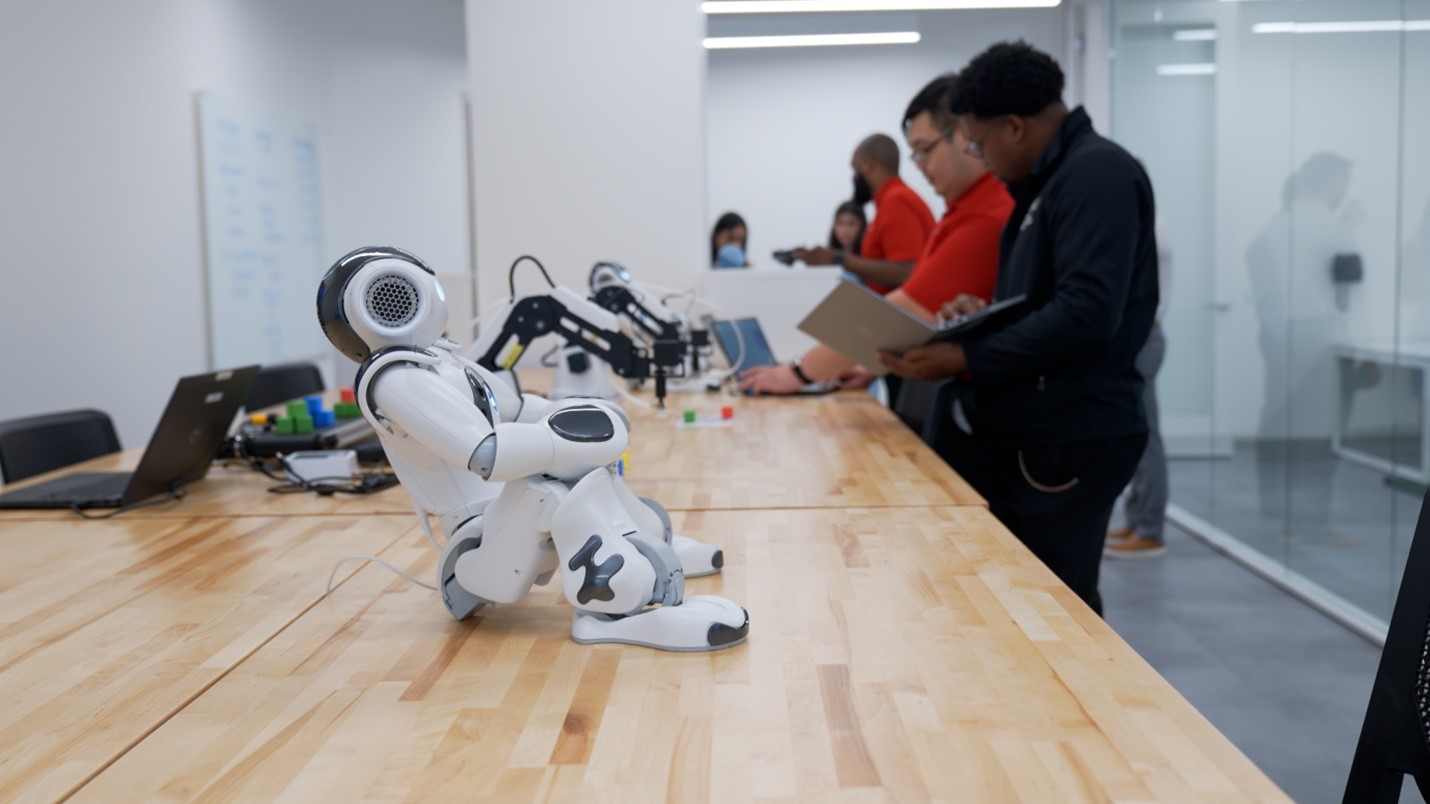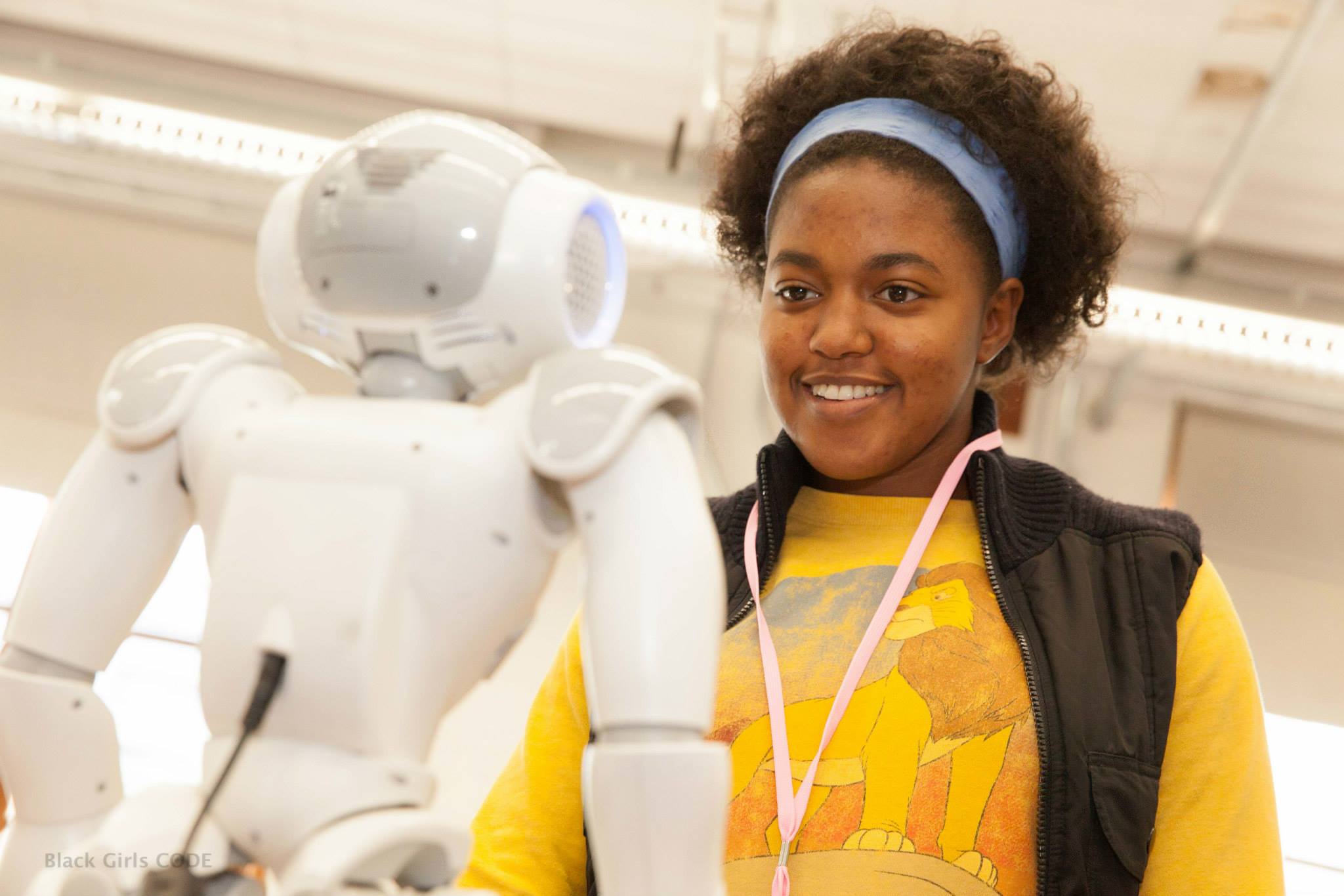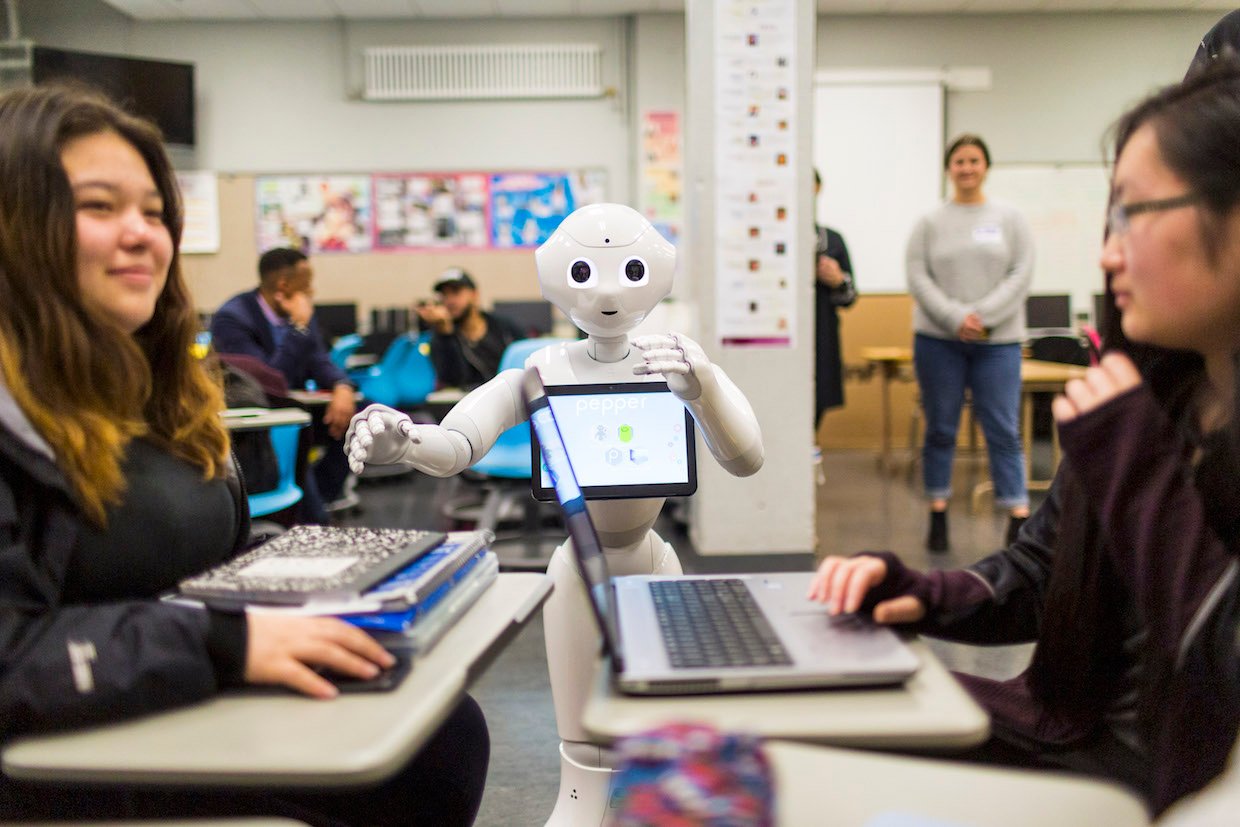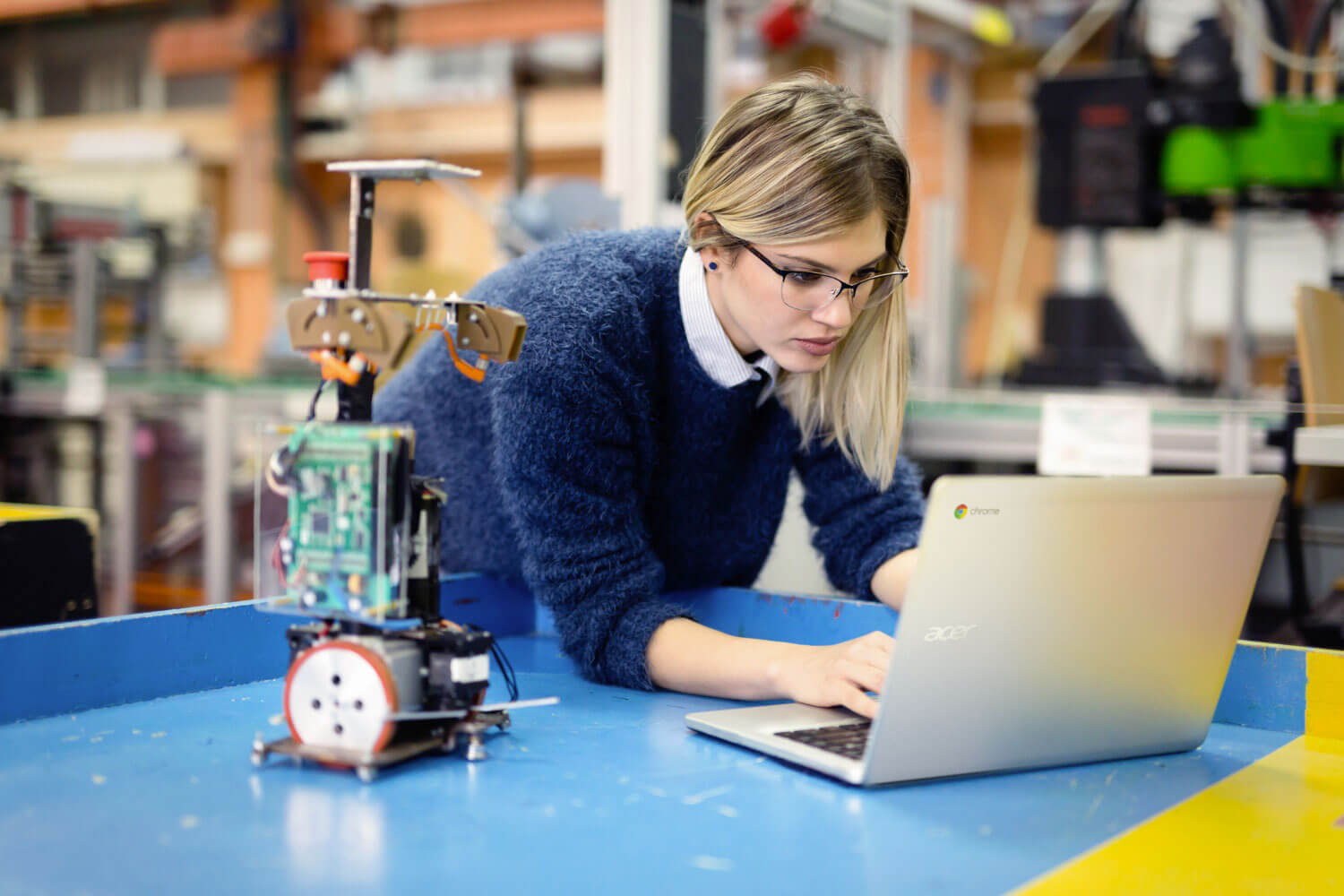RobotLAB Blog
Everything You Need To Know About Robotics in Businesses
Using Robotics to Teach About Cybersecurity
By Devin Partida Photo by Dan Nelson on Unsplash
Photo by Dan Nelson on Unsplash
Curricula must shift for educators to create a well-informed next generation of cybersecurity analysts. Though robotics is an umbrella containing many branches, K-12 teachers can use robotics to teach cybersecurity more effectively than other subjects.
- 0 Comments
- Oct 6, 2022 3:11:12 PM
- Posted by Maria Alejandra Calcetero
- Topics: EdTech, STEM, Education, Computer Science, 21st Century Classroom, School, Student Engagement, Middle School, High School, AI
How Crucial Is Artificial Intelligence to the Rise of Ed Tech?
By Ellie Poverly-jpg.jpeg?width=1920&name=possessed-photography-jIBMSMs4_kA-unsplash%20(002)-jpg.jpeg) Image Source: www.unsplash.com
Image Source: www.unsplash.com
Anyone in the education sector knows that new technologies are poised to revolutionize the traditional classroom.
In the past few years, educational institutions have adapted to a new normal brought about by the COVID-19 pandemic. Parents, students, teachers and administrators had to remain flexible, adjust to virtual learning environments and adopt new digital technologies to facilitate learning.
Although the industry is still reeling from the adverse effects of the pandemic, the global disruption sparked major growth in one relevant sector: education technology (ed tech).
A primary example of ed tech is artificial intelligence (AI), which has already proven itself as a highly useful, effective tool with various applications and benefits. How important is AI in supporting the rise of the ed tech market? Will more K-12 and secondary education institutions adopt AI-based solutions in the future?
- 0 Comments
- Sep 17, 2022 10:00:00 AM
- Posted by Mike Nardine
- Topics: EdTech, STEM, Education, Computer Science, 21st Century Classroom, School, Student Engagement, Middle School, High School, AI
The Alan B. Levan | NSU Broward Center of Innovation integrates a robotics AI LAB for entrepreneurs

The implementation of the lab will provide entrepreneurs with real world experience in robotics and artificial intelligence.
September 1st, 2022 – San Francisco, CA – The Alan B. Levan | NSU Broward Center of Innovation (“Levan Center”), in partnership with RobotLAB, the leading educational robotics company, partnered to build an artificial intelligence and robotics lab.
- 0 Comments
- Sep 1, 2022 11:11:55 AM
- Posted by Mike Nardine
- Topics: EdTech, STEM, Education, Computer Science, 21st Century Classroom, School, Student Engagement, Middle School, High School, AI
Promoting Diversity and Inclusion In Robotics Education
By Devin Partida
 Image source: Black Girls Code
Image source: Black Girls Code
Diversity and inclusion are vital to creating a robotics education curriculum that invites all students to explore STEM. Many teachers today, at all levels, are working hard to make their approach more inclusive and equitable for all kids.
It can sometimes be confusing working out where to get started. These tips can be used in any classroom, for any type of course. They’ll give you a place to start building your inclusive robotics education strategy from so you can make the world of STEM accessible to all students.
- 0 Comments
- Aug 11, 2022 10:17:23 AM
- Posted by Natalia Galvis
- Topics: Robotics, EdTech, STEM, Artificial Intelligence, Robots,, AI, classroom, Inteligencia Artificial, school robots
Use Cases For Robotic Process Automation At Educational Institutions
By Carla Jose
 Image source: Softbank Robotics
Image source: Softbank Robotics
Whether it is creating a favorable learning environment or holding teacher-parent meetings, administrative and educational processes in universities, colleges, and schools are filled with a lot of paperwork and repetitive processes.
These processes consume a lot of resources and time, things that can be used in other areas to improve learning experiences. If you visit most universities around the globe, do not be surprised to find that they are largely understaffed.
The ratio of staff to students even gets worse in the peak season, meaning that a solution is needed as soon as possible. Fortunately, Robotic Process Automation (RPA) can help administrators and educators to automate processes and tasks in a bid to create a better working and learning environment.
- 0 Comments
- Jul 21, 2022 12:12:20 PM
- Posted by Natalia Galvis
- Topics: Robotics, EdTech, STEM, Artificial Intelligence, Robots,, AI, classroom, Inteligencia Artificial, school robots
Pursuing Education to Score a Robotics Career in Government
By Devin Partida
Because of today’s advanced technology, robots are the next big thing. Robots can help streamline processes and reduce human error, and a job in robotics can offer plenty of growth and a competitive salary.
If you are a robotics or STEM educator, here are some steps for helping students in their robotics career journey — especially if your students are interested in pursuing a robotics career within the government.
- 0 Comments
- Jul 20, 2022 8:42:42 AM
- Posted by Elad Inbar
- Topics: Robotics, EdTech, STEM, Artificial Intelligence, Robots,, AI, classroom, Inteligencia Artificial, school robots
How Educators and Millennial Parents Are Tackling EdTech Together
By Dan Matthews
 Photo by Julia M Cameron: https://www.pexels.com/photo/photo-of-woman-tutoring-young-boy-4145354/
Photo by Julia M Cameron: https://www.pexels.com/photo/photo-of-woman-tutoring-young-boy-4145354/
Let’s face it: Ours is truly the great age of technology. And while many parents may want their children to enjoy the simple innocence of childhood, free of the risks that an overreliance on tech can yield, the simple truth is that technology isn’t just a staple in the lives of children today, but it’s also inevitably going to form the cornerstone of their future success.
In other words, there’s just no denying the central importance of technology in the lives of children today. Millennial parents, however, understand perhaps better than most that this is by no means a necessarily bad thing. As the first generation of digital natives, millennials understand what it means to grow up with a device in your hands.
Best of all, they understand the unique power of technology as a learning tool. It is for this reason that millennial parents and educators are increasingly forging a potent alliance for the use of technology in education.
- 0 Comments
- Jun 29, 2022 10:00:00 AM
- Posted by Elad Inbar
- Topics: Robotics, EdTech, STEM, Artificial Intelligence, Robots,, Technology, AI, classroom, Inteligencia Artificial, school robots
6 Educational Grants That Could Let You Bring Robotics Into the Classroom
By Carla Jose
Image Source: Pexels
Robotics isn’t just a technology that’s suitable for manufacturing and other major industries; it also has applications in an education context. Of course robotics systems are not always affordable for the average school, college or university. So what grants and support schemes are out there which could bring high end systems within reach of average institutions?
- 0 Comments
- Jun 24, 2022 10:00:00 AM
- Posted by Elad Inbar
- Topics: Robotics, EdTech, STEM, Artificial Intelligence, Robots,, AI, classroom, Inteligencia Artificial, school robots
Hard & Soft Skills That Can Improve Your Robotics Education
By Devin Partida
There has never been a better time to pursue a career in robotics. The industry continues to grow every year in both value and size. To compete today, aspiring robotics engineers and professionals must have a comprehensive skill set. These hard and soft skills will improve your robotics education and help set you up for success in the robotics industry
- 0 Comments
- Jun 22, 2022 10:00:00 AM
- Posted by Elad Inbar
- Topics: Robotics, EdTech, STEM, Artificial Intelligence, Robots,, AI, classroom, Inteligencia Artificial, school robots
The Future Is Here: How Artificial Intelligence Can Improve Your Studies
By IvyPanda
Artificial intelligence has had an enormous impact on many aspects of our lives, including education. Even UNSECO has acknowledged it! In 2019, they’ve created the Beijing Consensus on Artificial Intelligence and Education, which includes recommendations on using such software in classrooms. As you can see, AI is here to stay.
- 0 Comments
- Jun 15, 2022 12:34:16 PM
- Posted by Elad Inbar
- Topics: EdTech, STEM, Artificial Intelligence, AI, Inteligencia Artificial
Relevant Posts
- Augmented Reality: A Tool for Teaching Students Robot Programming
- Fostering Innovation Through Youth Education in STEM and EdTech
- How Parents Can Foster STEM Learning Beyond the Classroom
- How Robotics Cultivates a Deep Understanding of Mathematics in Students
- RobotLAB Receives EDTech Chronicle 2023 ‘BESTIE’ Award for Landmark Partnership with American Samoa Dept. of Education.
Subscribe to Email Updates
-
I Want To Learn MoreADDITIONAL INFORMATION



